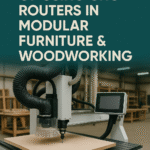Maintaining your woodworking machinery is crucial for ensuring both safety and longevity. Regular cleaning is the first step in a solid maintenance routine. Dust and debris can accumulate in your machines, causing them to overheat or malfunction. Use compressed air or a vacuum to clear out hard-to-reach areas, and wipe down surfaces to prevent buildup. Lubrication is another essential aspect, as it helps reduce friction and wear on moving parts. Be sure to check and replace any worn-out belts or blades, which can affect the machine’s performance and lead to accidents if left unattended. Additionally, aligning and calibrating your machines regularly ensures precision in your work, helping you avoid costly mistakes.
In addition to cleaning and lubrication, electrical components need attention to keep your machines running smoothly. Inspect cords, plugs, and switches for any signs of wear or damage, as these could lead to electrical failures or even fires. Make sure the power supply is adequate and that your machines are properly grounded to avoid any electrical hazards. Don’t overlook the importance of sharpening blades and bits, as dull tools require more force, which can strain your machinery and reduce the quality of your work. Lastly, establish a routine for inspecting safety features like guards and emergency stop buttons, ensuring they function correctly to protect you in case of an emergency. Regular maintenance not only extends the life of your equipment but also ensures your safety and the quality of your woodworking projects.







